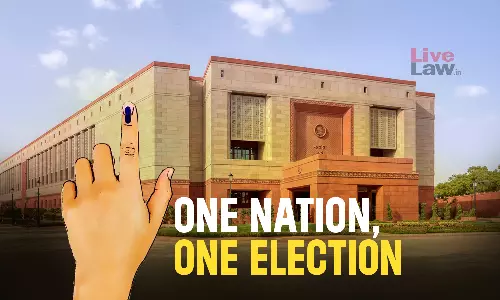
In the words of Audre Lorde, the renowned American feminist poet: "I write for those women who do not speak, for those who do not have a voice because they/we were so terrified, because we are taught to respect fear more than ourselves. We've been taught that silence would save us, but it won't." The world community has questioned how the Criminal Justice...
In the words of Audre Lorde, the renowned American feminist poet:
"I write for those women who do not speak, for those who do not have a voice because they/we were so terrified, because we are taught to respect fear more than ourselves. We've been taught that silence would save us, but it won't."
The world community has questioned how the Criminal Justice System in India, views and treats Dalit women and their bodies in light of the Hathras rape case. The impression one gets from the events that unfolded is that the Dasya girl was a lesser being in modern day India: the Uttar Pradesh police's delay in filing the First Information Report; the initial half-hearted and shoddy investigation of the crime; non-consideration of the victim's dying declaration; victim's character assassination to rule out rape charges; casteist attitude towards the victim and her family who belong to the low caste Valmiki community; collusion with the alleged rapists who belong to the higher caste Thakur community; and the hasty cremation of the victim's body without following the customary rituals. Seemingly, she was neither eligible to exercise human rights as a human individual nor entitled to fundamental rights as a citizen of India.
Parallel findings can be made in the American Legal System and how it constructed the image of an African-American woman during the slavery era. After all, racism and casteism are twin offsprings and share a common parentage- inequality and discrimination. Racism and casteism are antithetical to equality and liberty which are the corner stones of both the American and Indian constitutions.
The American Legal System played a significant role in the spread and survival of the institution of slavery and the concomitant subjugation of African-American females. In his book titled "An Inquiry into the Law of Negro Slavery in the United States of America", Thomas R. R. Cobbs wrote that the subjugation of male and female slaves-physically, intellectually and morally- by the white slaveholding class was for the very happiness, perfection and progress of the negro race.
A typical slave in America occupied a double character of a person and property. For most purposes, the slave was considered a property of the master except when being punished for a crime. Being under the absolute and uncontrolled dominion of the master, the slave was totally deprived of the fundamental right to one's life and limb. The master's control over the slave was so deep that a slave's murder by the master subjected the latter to no punishment unless, expressly provided for by state laws. Rather, the American Legal System looked favourably and forgivingly upon such a conduct which was actually considered a disciplining mechanism practiced by the slave masters to uphold their vested interests.
The slave was the master's chattel property and the latter could do anything with his property as he deemed fit. However, it was against the general policy of American law to extend over to the slave community any kind of protection, privileges and rights intended for human beings and citizens of the country. Particularly, female slaves were denied any protection against sexual crimes like rape.
In addition to manual labor, the female slaves performed sexual labor for their white masters. In a leading slave era case of Conrad Anschicks v. The State, 6 Tex. Ct. App. 524 (1879),
white defendant Anschicks raped and injured Liney King, a 10 year old, 3.5 feet tall negro girl who worked as a day house maid, when she declined to have sexual intercourse with him in return for a pair of shoes. Seeing the blood stains on Liney's dress and her deteriorating physical condition, her guardian was forced to file a criminal complaint against Anschicks at the mayor's office. The District Court of Robertson and Milam held the defendant guilty and sentenced him to imprisonment for a term of 20 years and 5 years respectively. However, this sentence was overturned by the Texas Court of Appeals that found Anschicks innocent on the ground of insufficient evidence.
The court reiterating the existing law on rape stated that a black female above ten years of age was presumed to have sufficient information about sexual intercourse and that she was very much capable of giving her consent as well as resisting sexual advances. Further, a black female bore the burden to prove her innocence and the fact that she did not consent to have sex with her abuser. The court disregarded the doctor's testimony that Liney's injuries reflected that her private parts had been penetrated by some blunt instrument and the injuries were such as could have been inflicted only by a grown-up man like Anschicks. By acquitting Anschicks the Court did not just peel off the bandage from Liney's wound but pierced a pen right through it!- sounds familiar much?
It was widely believed that the sexual labor performed by the female slaves did not necessarily hamper their physical existence and productivity on farm. Thomas Jefferson, the great American statesman in a letter to John Wayles Epps wrote that "I know no error more consuming to an estate than that of stocking farms with men almost exclusively. I consider a woman who brings a child every two years as more profitable than the best man of the farm. What she produces is an addition to the capital, while his labors disappear in mere consumption." Even in the movie "12 Years a Slave" the drunkard slave owner Edwin Epps sexually exploited his black female slave Patsey to fulfil his sexual desires apart from making her labor relentlessly on his farm.
The image of a typical female slave was that of a lascivious, lustful and unchaste creature. The American Legal System mirrored the society's gradation of human beings on the scale of physical, intellectual and moral quotients on which the female slaves ranked the lowest. It was widely believed that the female slaves possessed a bad character like Jezebel and welcomed the sexual advances made by the slave owners. This picture of a black woman as being 'unrapeable' was painted during the slavery era to justify the slave owner's unfettered access to a black woman's body.
One can easily spot an uncanny resemblance in the treatment meted out to the female slaves in America and the Dalit women in India. When the Hathras victim resisted her rapists they strangled her in order to silence her forever so that she would never be able to tell the society as well as the state about the physical violence and psychological pains inflicted upon her. The girl is dead but what was done to her is symbolic. It tells us the story of the Dalit community in India which suffers from the 'Silence Syndrome' much like the African-American community in the US. They are silent because the criminal justice system has invisibilized their pains and sufferings; excluded them from legal protections; and discriminated against them for occupying the lowest rung on the society's measuring scale of human beings. Their respective societies and legal systems have betrayed them. Now they will get justice only if, it is in their destiny!
Views are personal.
(Prerna Dhoop is a human rights lawyer based in Kolkata & Vandana Dhoop is an independent research consultant)




